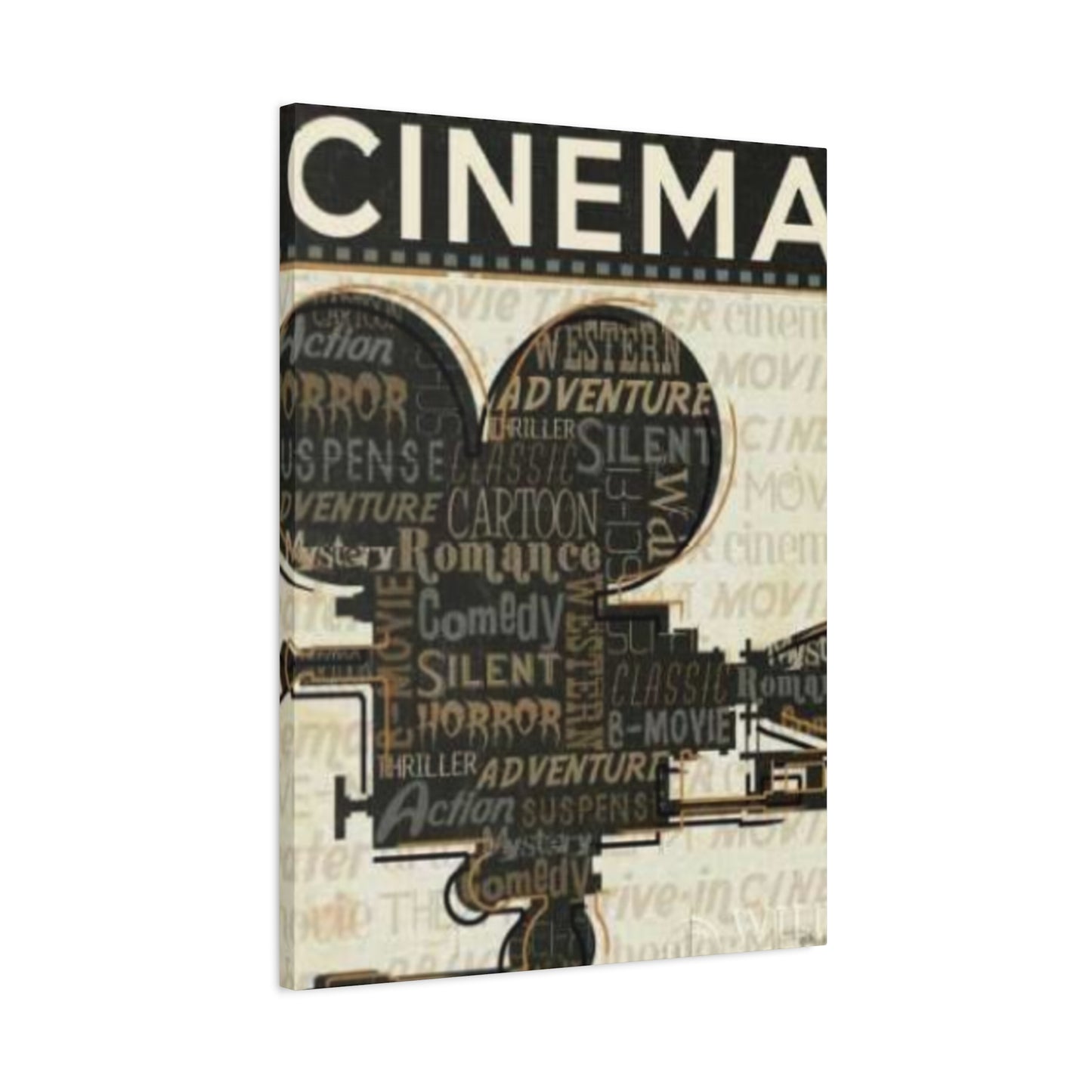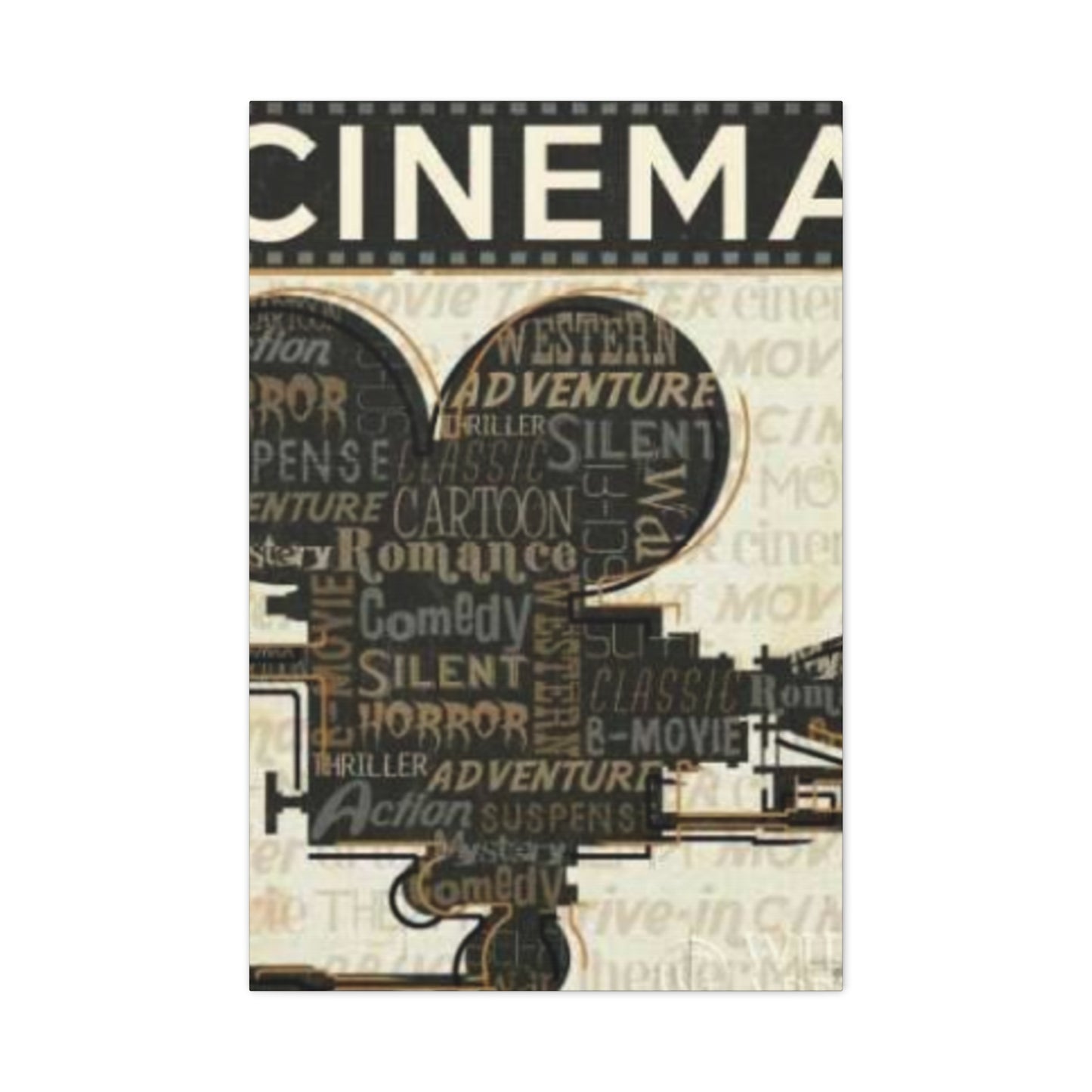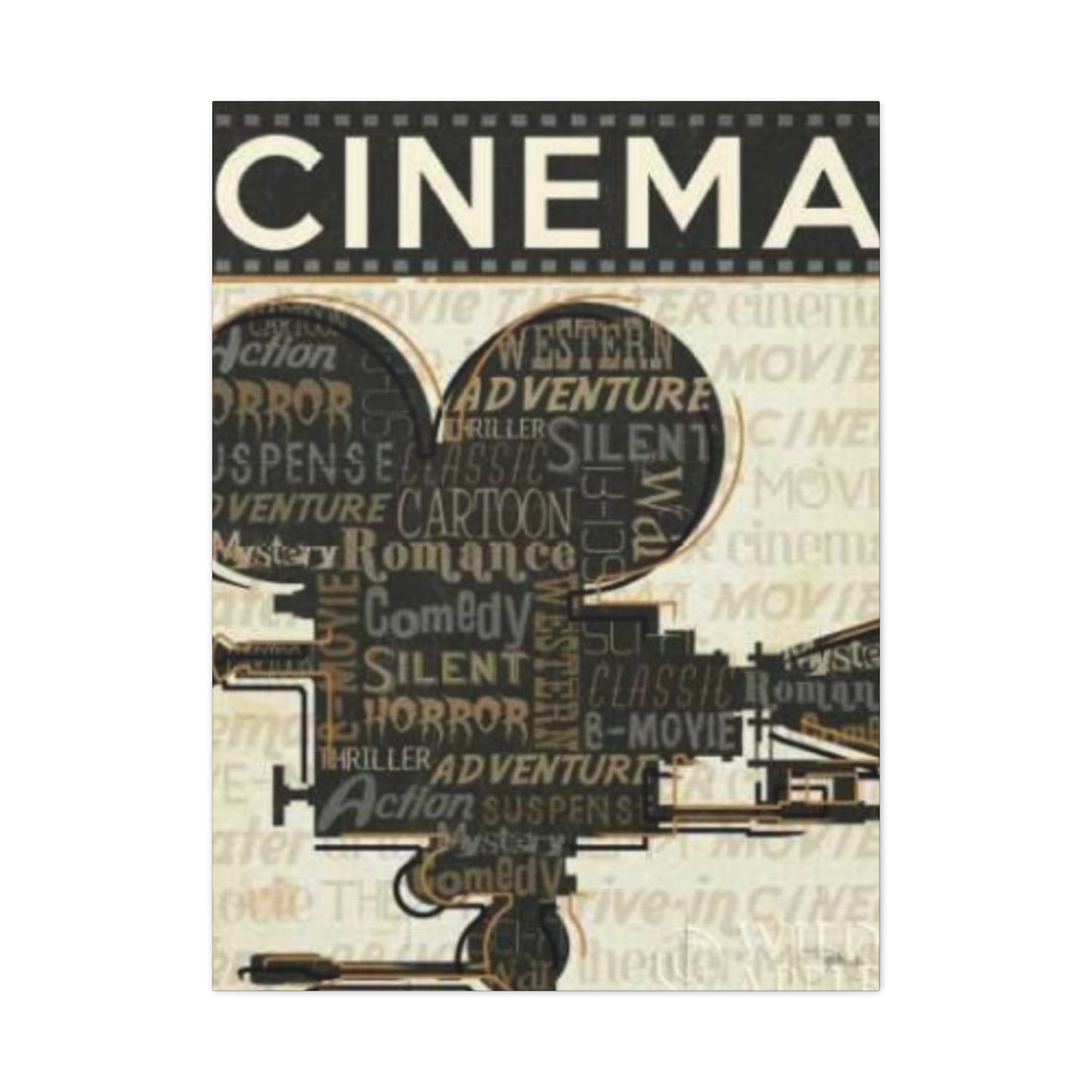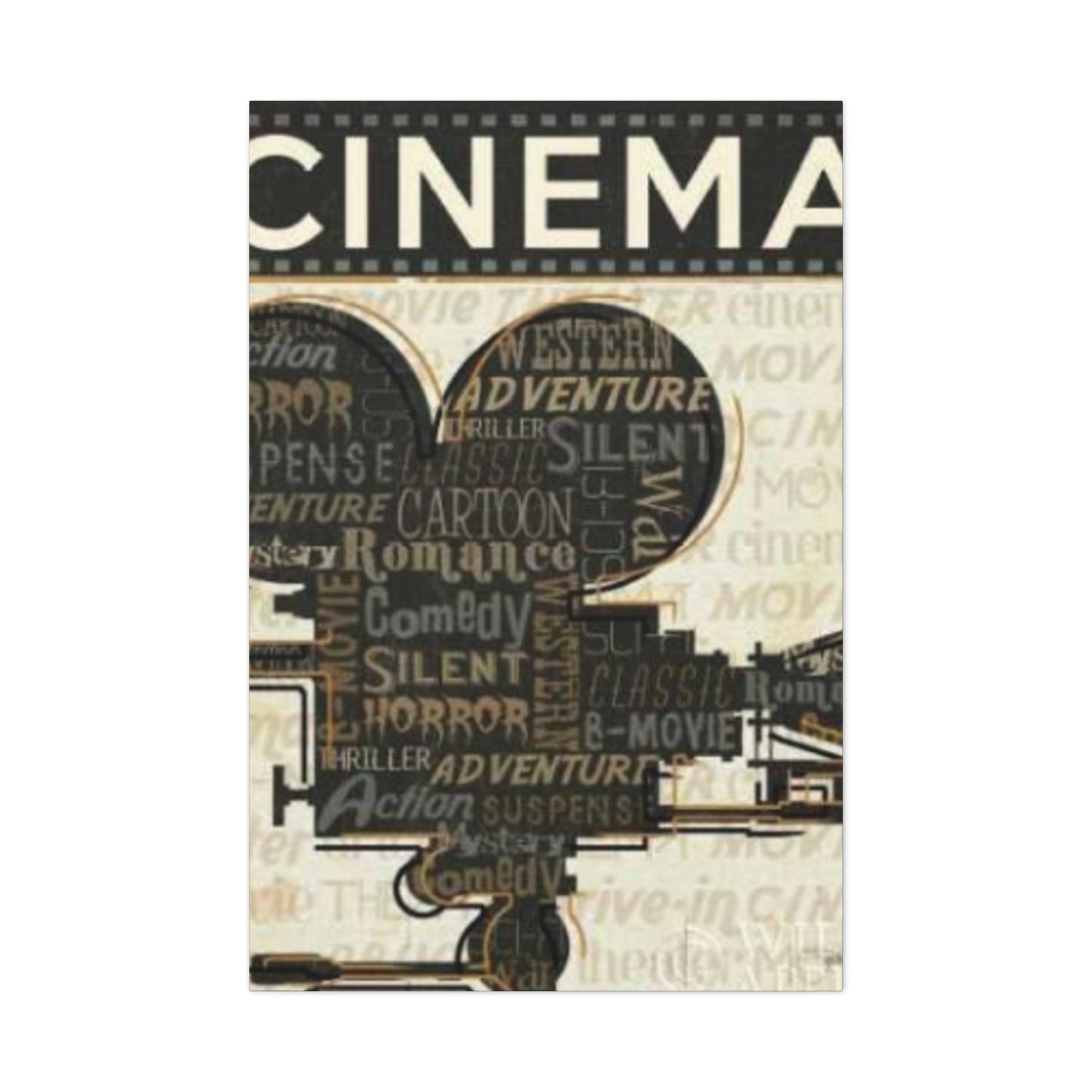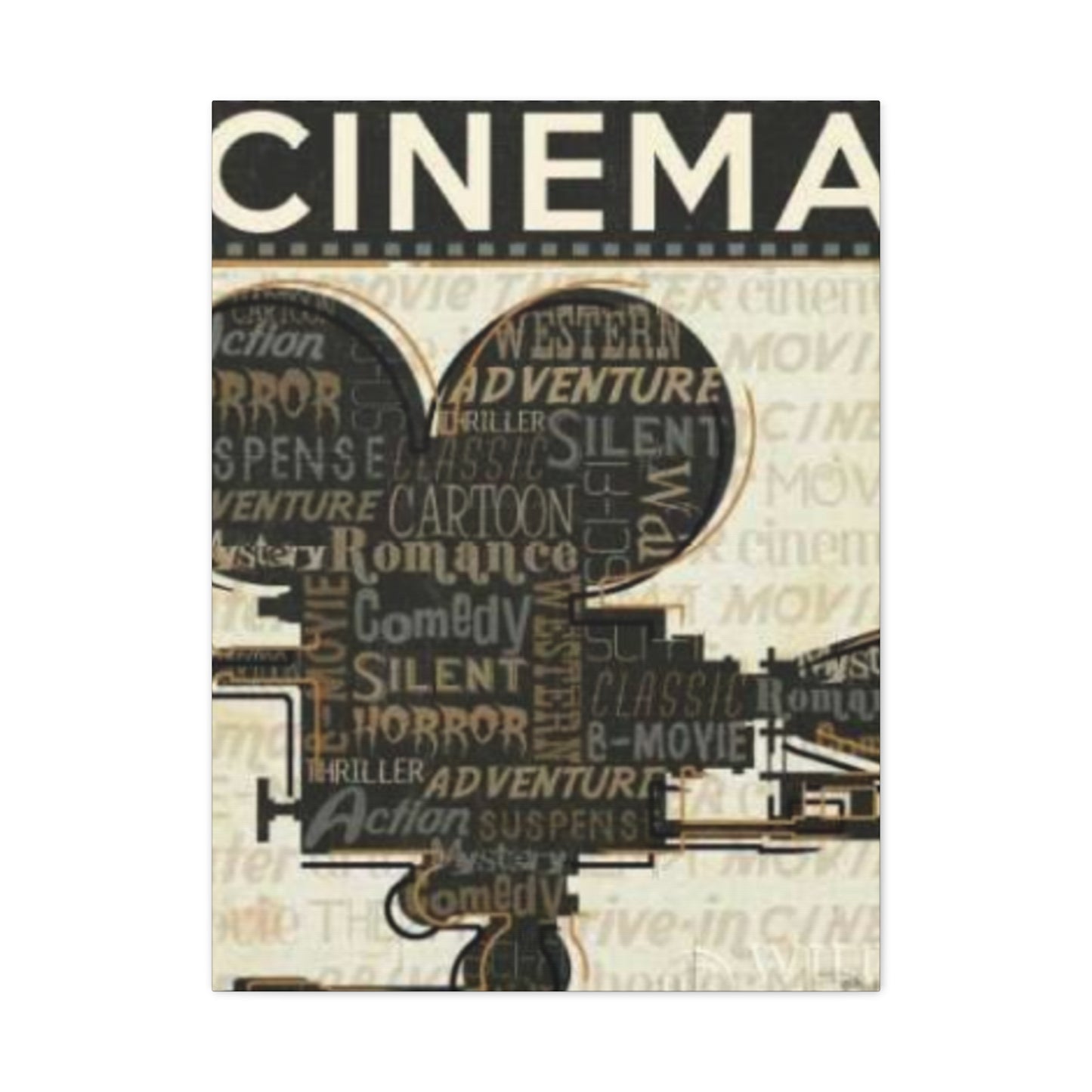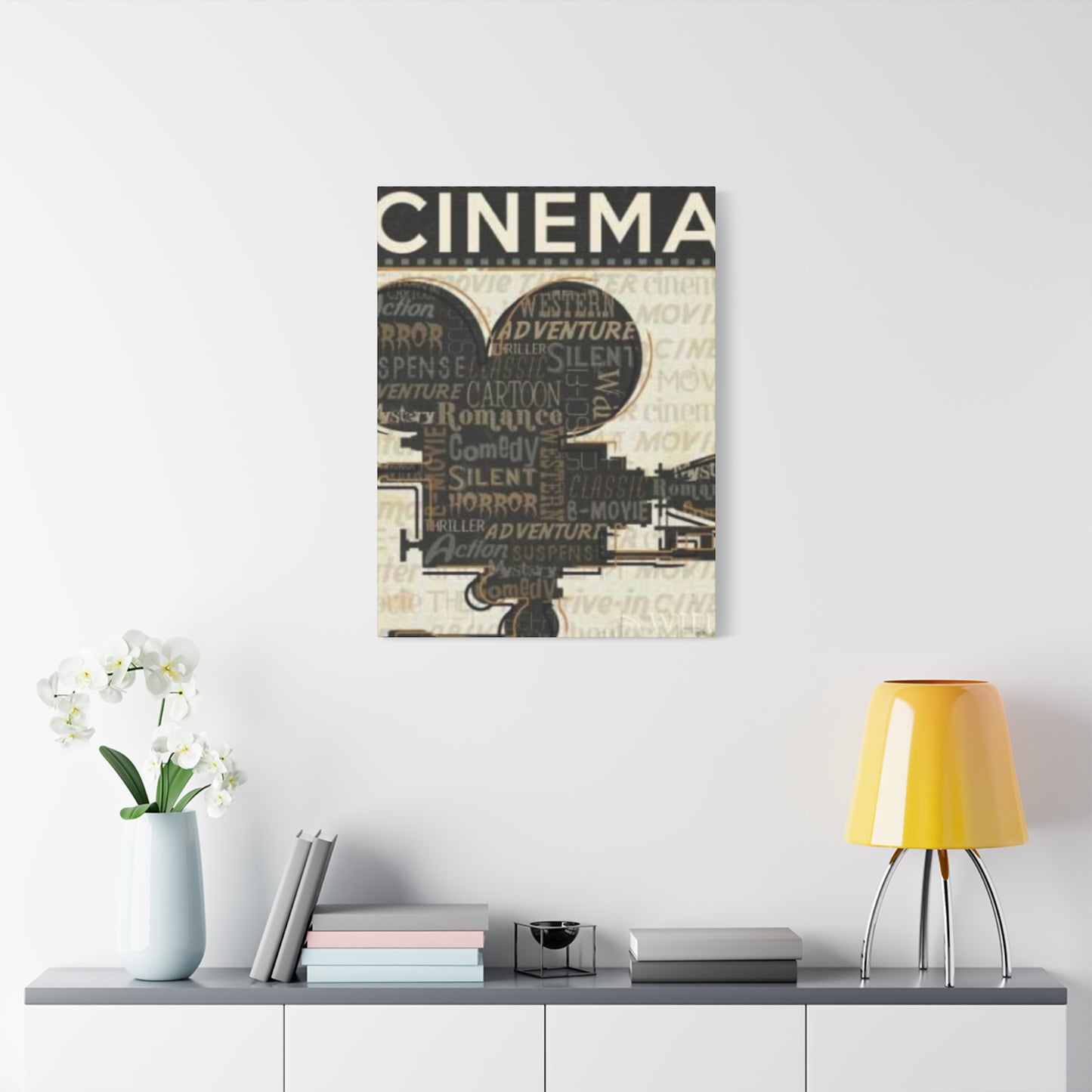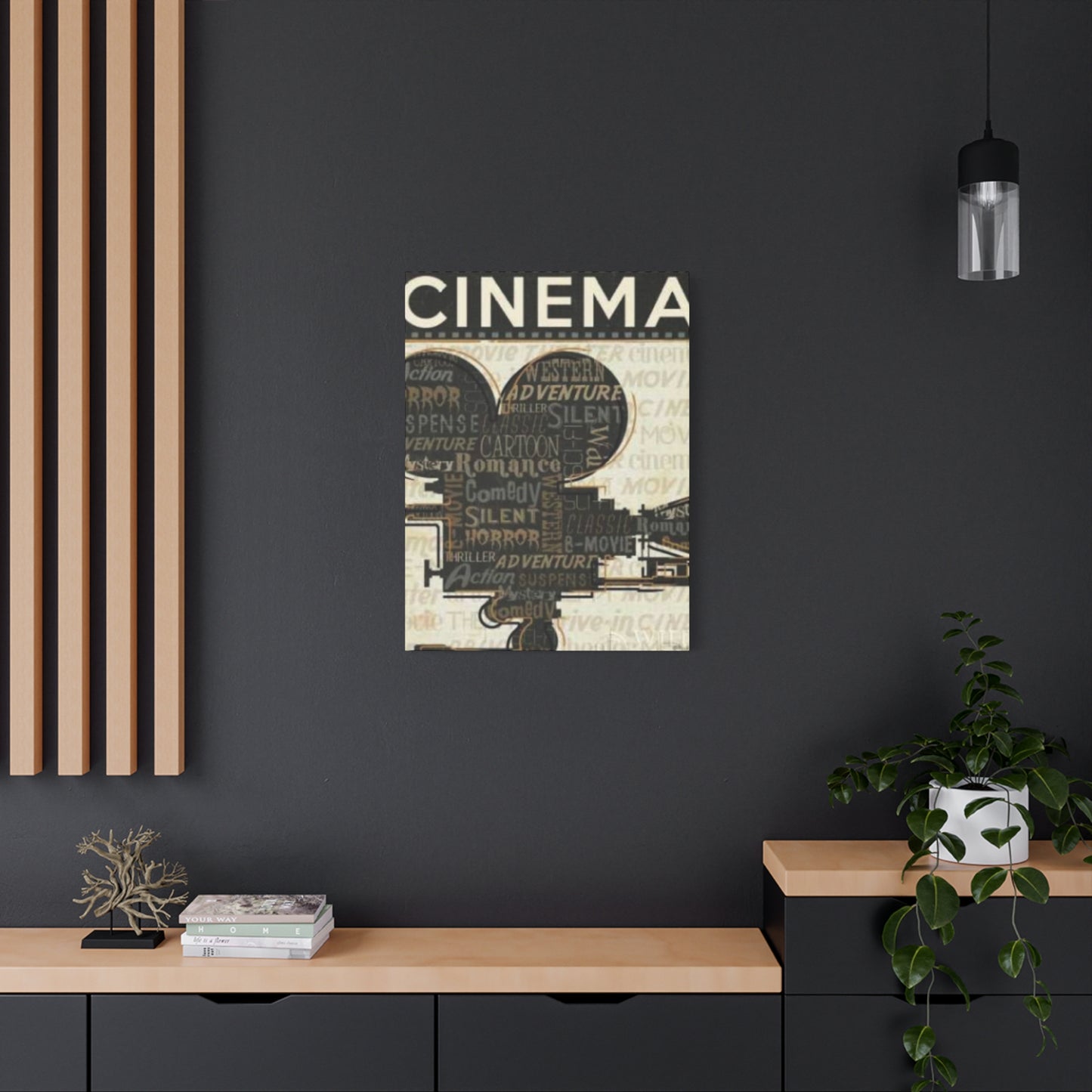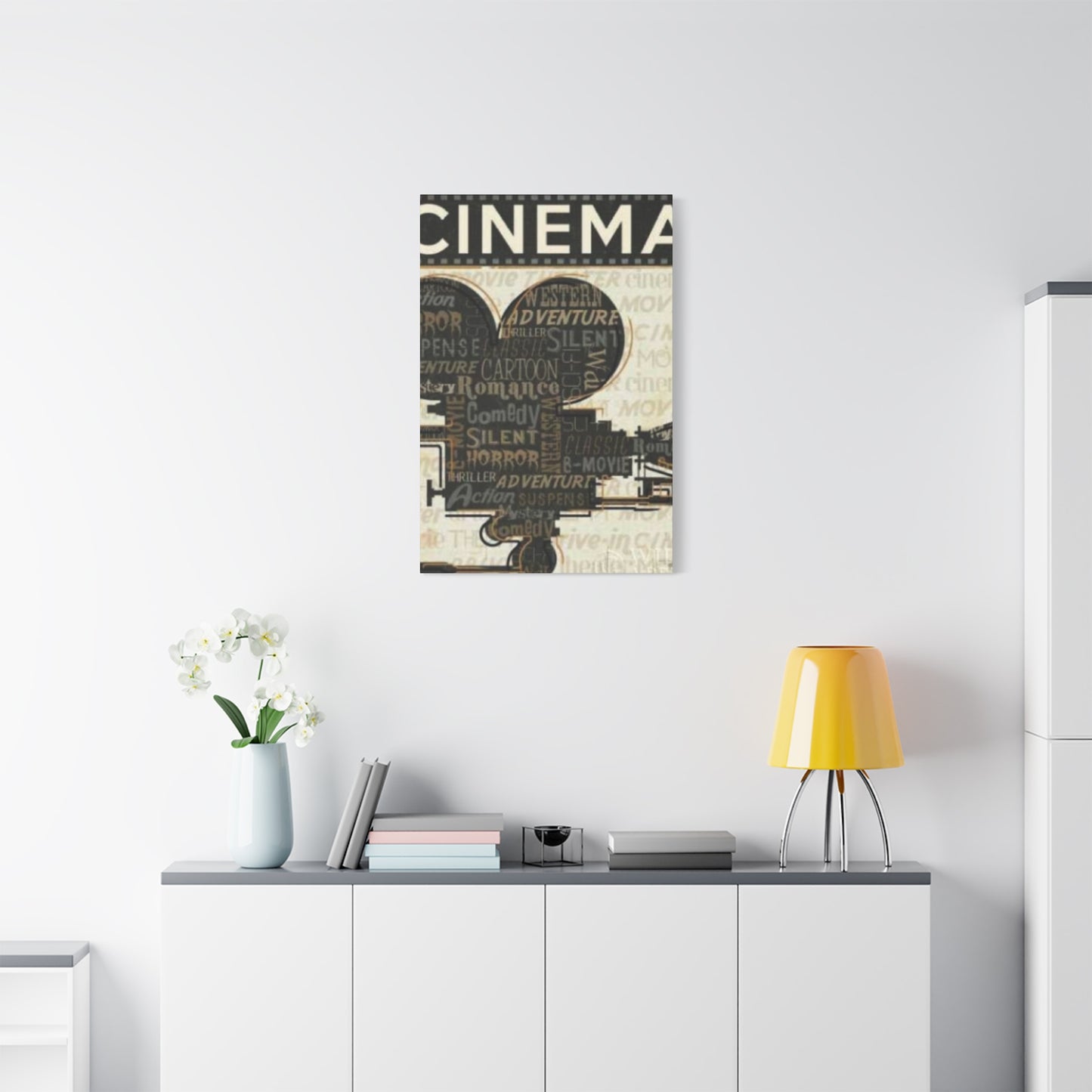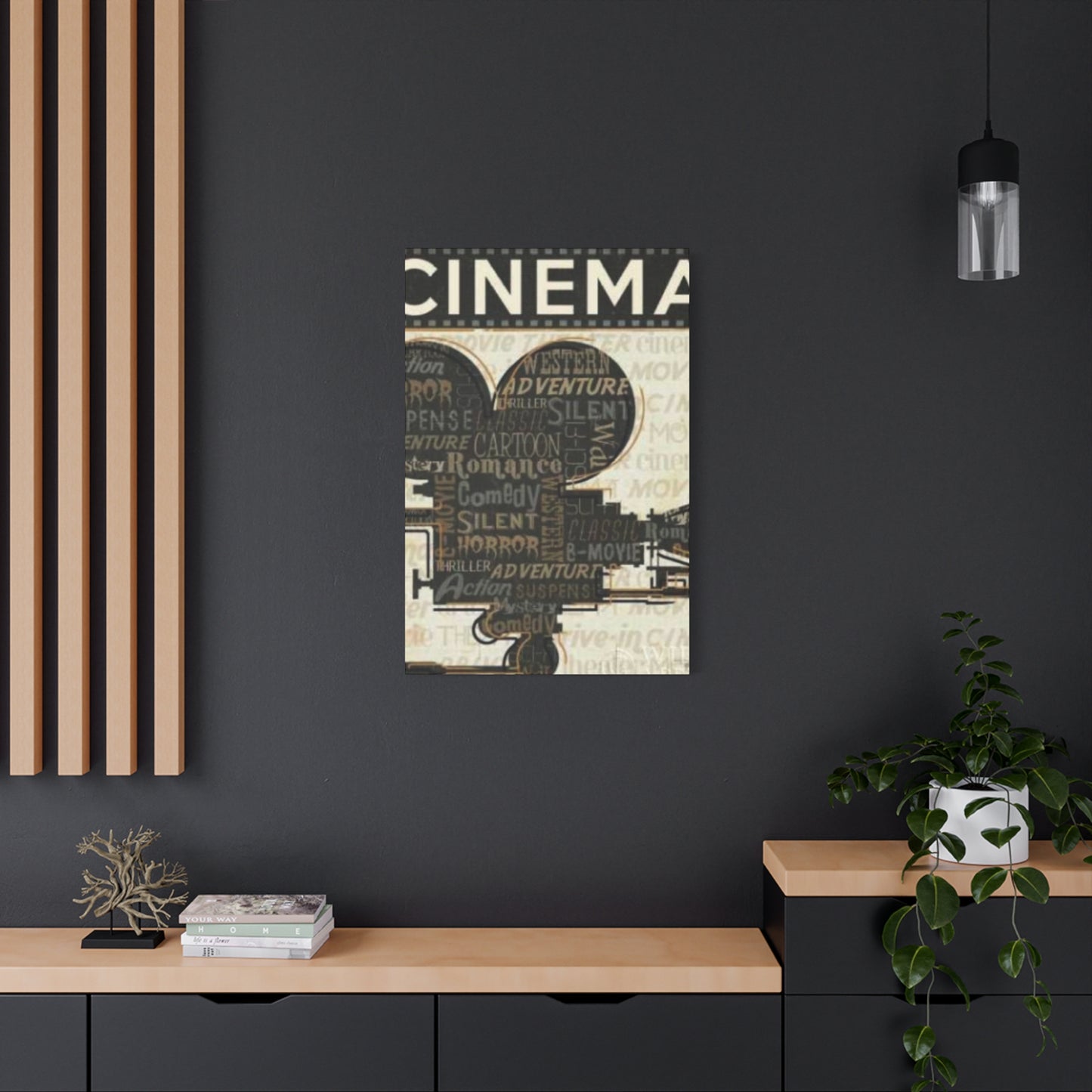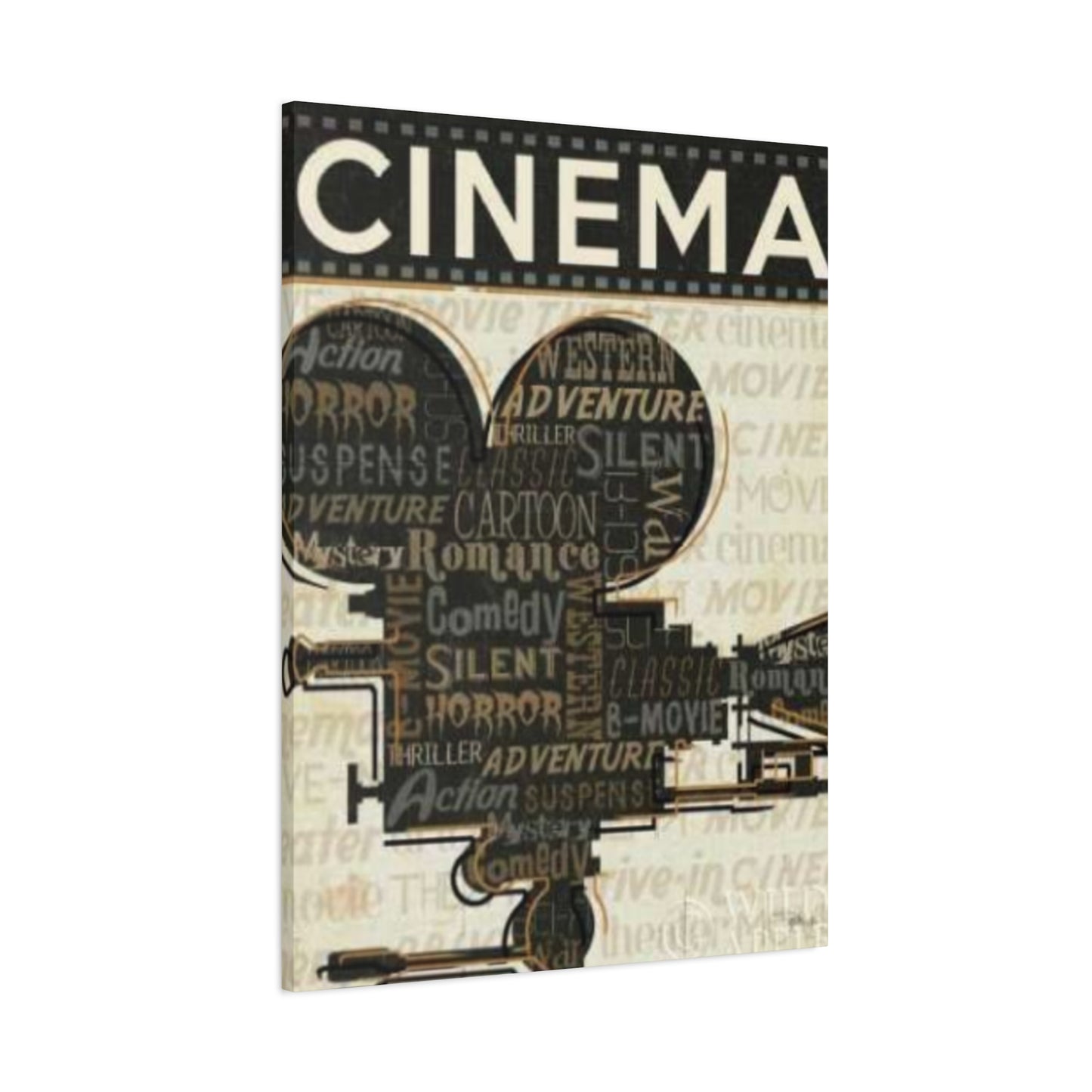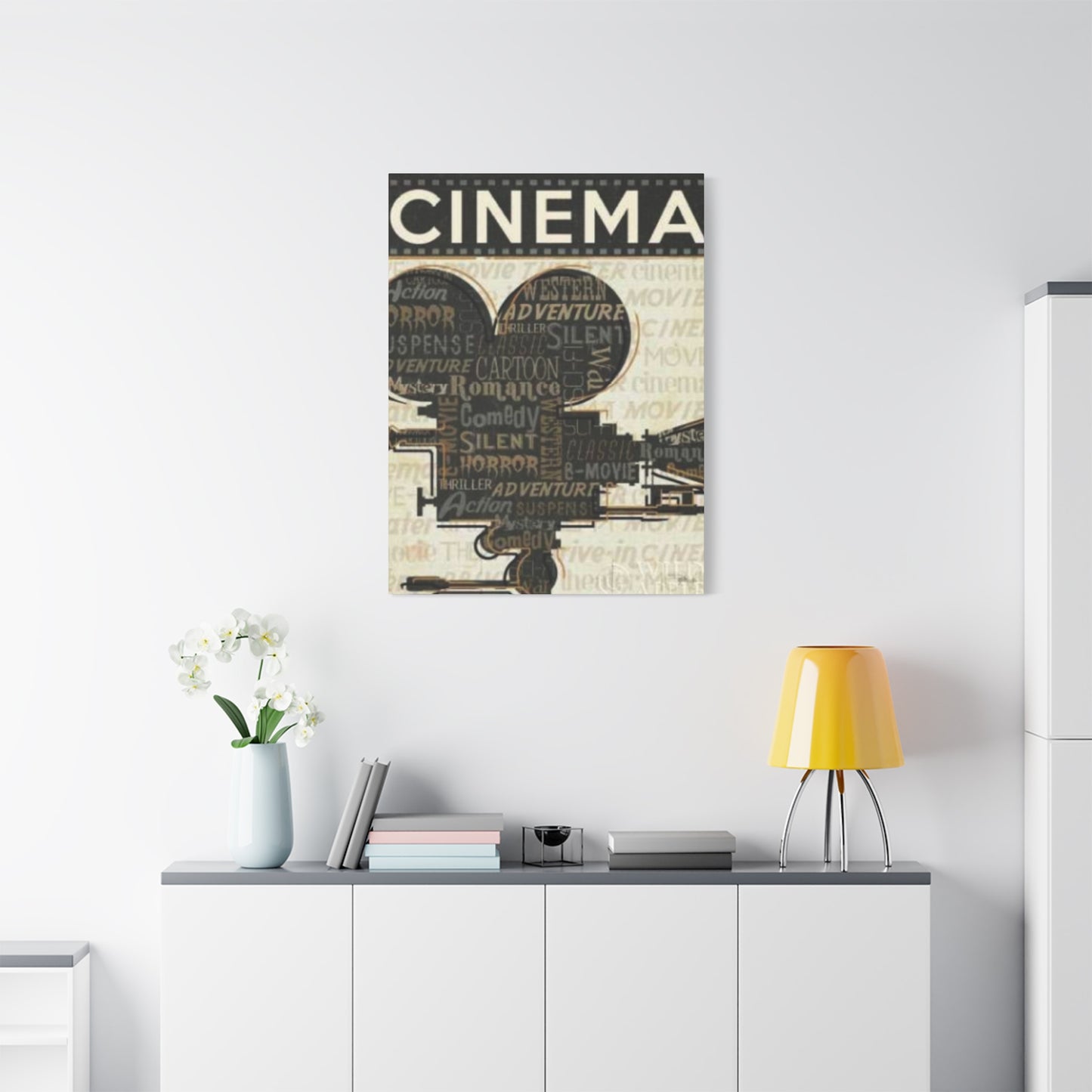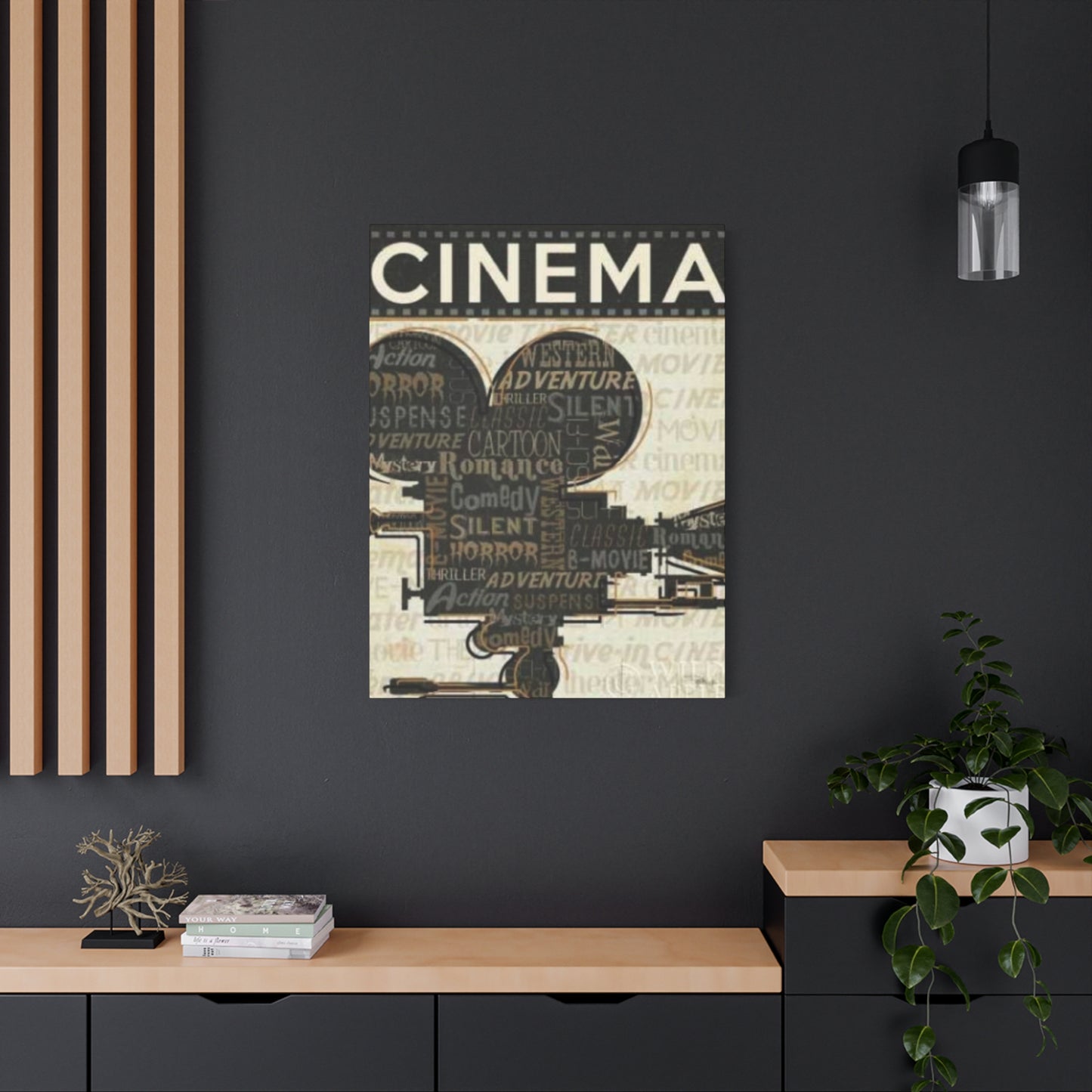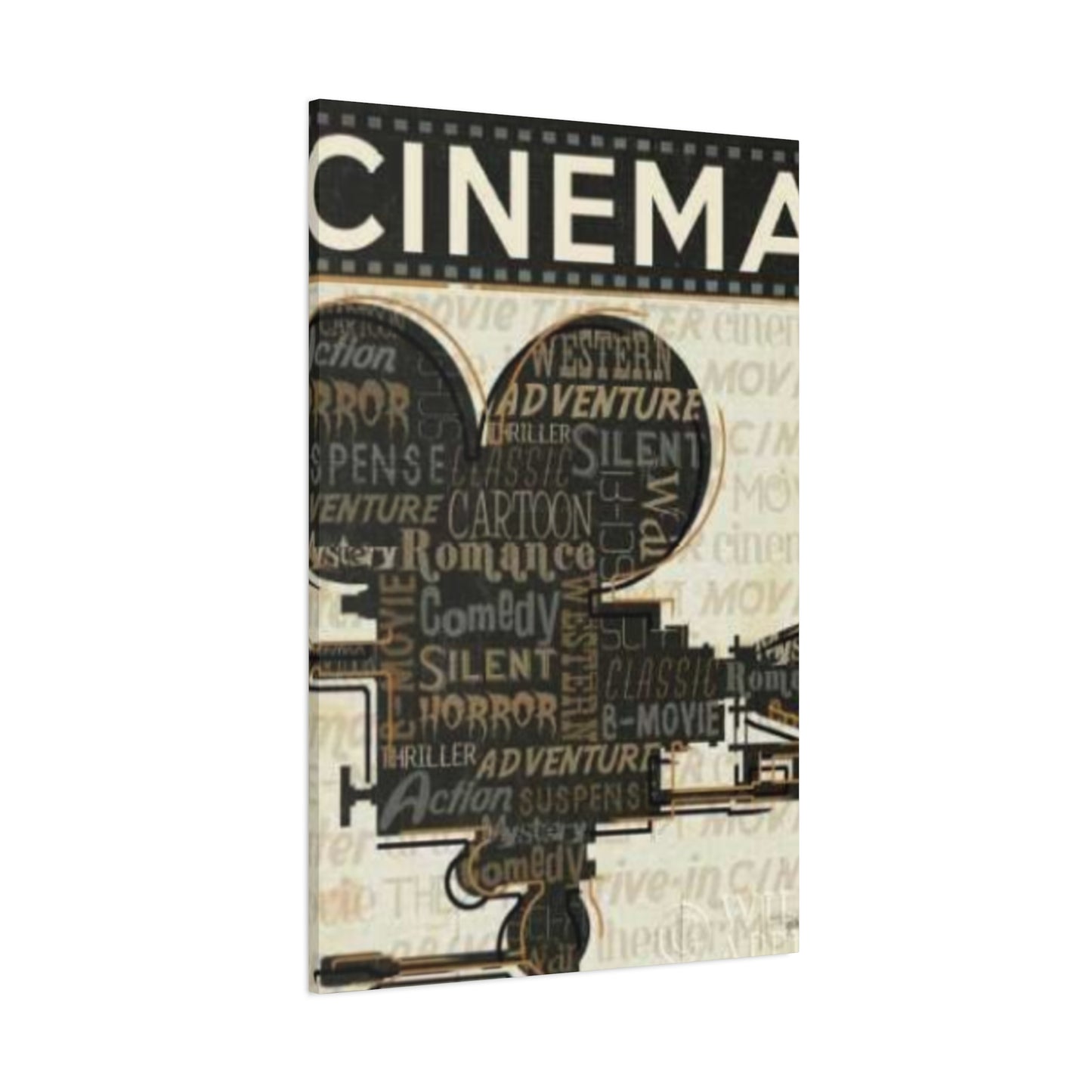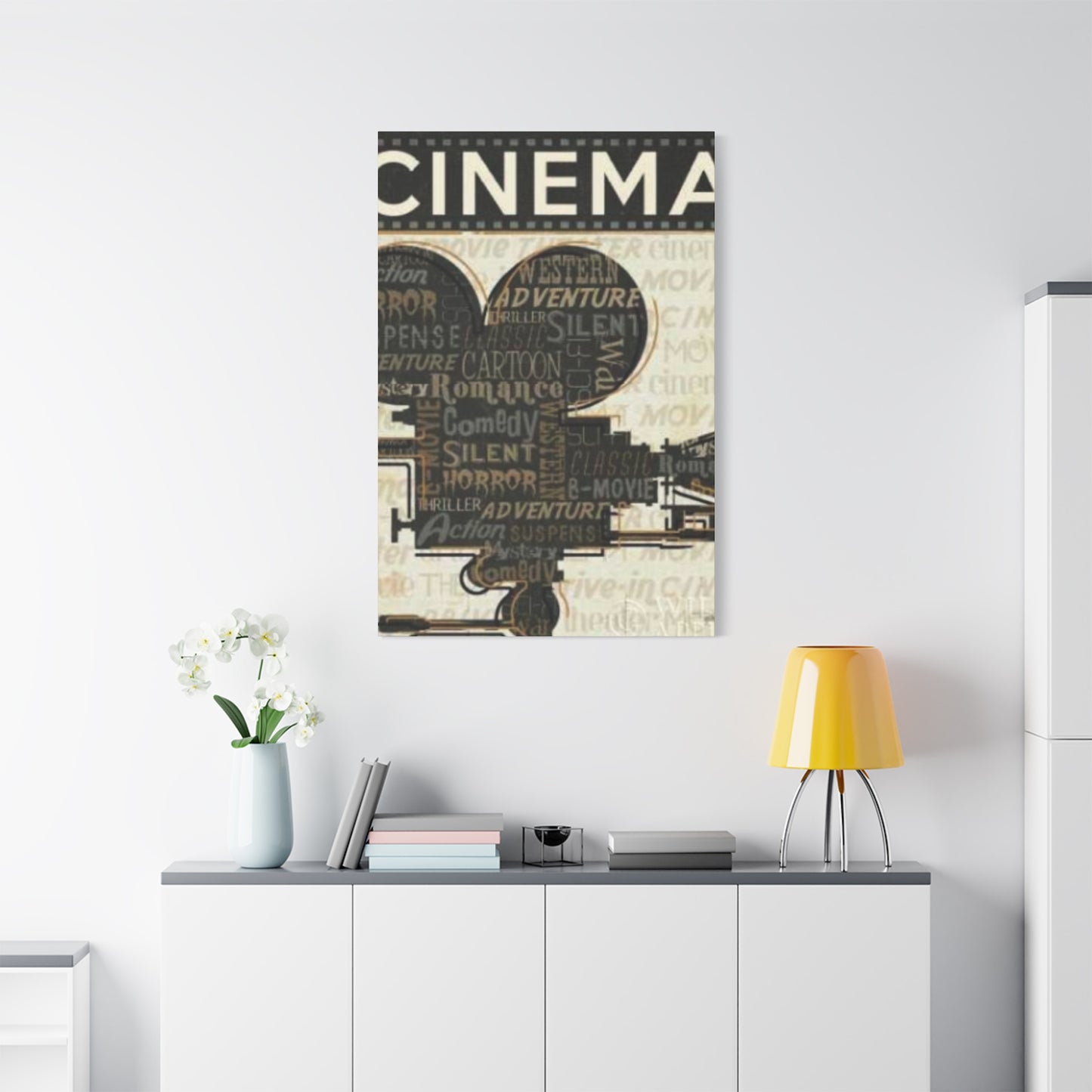Cinema-Inspired Wall Art: Your Guide to Movie Genre Home Decor
The world of cinema offers endless inspiration for home decoration, and incorporating movie-themed elements into your living environment has become increasingly popular among film enthusiasts and design-conscious homeowners alike. From classic Hollywood glamour to modern blockbuster aesthetics, cinema genres provide a rich tapestry of visual elements that can transform any room into a captivating showcase of cinematic artistry.
Movie-inspired home decoration goes beyond simply hanging a few posters on the wall. It involves understanding the visual language of different film genres, their color palettes, typography, iconography, and overall aesthetic principles. Whether you're drawn to the dark, moody atmosphere of film noir, the vibrant energy of action movies, or the whimsical charm of animated features, each genre offers unique opportunities to create compelling visual displays that reflect your personal taste and passion for cinema.
The art of cinema has always been deeply intertwined with visual design, from the carefully crafted set pieces and costume designs to the iconic promotional materials that have become collectible art pieces in their own right. These elements serve as perfect inspiration for creating personalized home decoration that celebrates the magic of movies while enhancing your living environment with sophisticated and engaging visual elements.
Creating cinema-themed home decoration requires careful consideration of various factors, including the existing architectural elements of your room, the lighting conditions, the intended mood and atmosphere, and how the cinematic elements will complement your existing furniture and decor. The key is to strike a balance between paying homage to your favorite films and genres while maintaining a cohesive and aesthetically pleasing overall design scheme.
This comprehensive exploration will guide you through numerous approaches to incorporating cinema-inspired elements into your home, covering everything from specific genre aesthetics to practical implementation techniques. Whether you're looking to create a subtle nod to your favorite films or transform an entire room into a cinematic shrine, understanding the principles and possibilities of movie-themed decoration will help you achieve your vision with style and sophistication.
Crafting Visual Narratives Through Classic Cinema Genre Aesthetics
Classic cinema genres each possess distinct visual characteristics that have evolved over decades of filmmaking, creating rich artistic traditions that translate beautifully into home decoration. Understanding these genre-specific aesthetics allows you to create cohesive and impactful displays that capture the essence of your favorite types of films while adding sophisticated visual interest to your living environment.
The Western genre, for instance, embodies themes of rugged individualism, vast landscapes, and frontier spirit through its use of earth tones, weathered textures, and iconic imagery of cowboys, horses, and desert vistas. When translating this aesthetic into home decoration, consider incorporating artwork that features sepia-toned photography, vintage-style illustrations of Western scenes, or abstract pieces that capture the sweeping grandeur of the American frontier. The color palette should emphasize warm browns, dusty oranges, deep reds, and weathered gold tones that evoke the sun-baked landscapes and worn leather of the Old West.
Horror cinema offers a dramatically different aesthetic approach, focusing on creating atmosphere through contrast, shadow, and psychological tension. Classic horror films utilize stark black and white compositions, gothic architectural elements, and unsettling imagery to create their distinctive mood. For home decoration inspired by this genre, consider pieces that play with light and shadow, feature gothic or Victorian-era architectural elements, or incorporate subtle references to classic horror iconography without being overly explicit or disturbing.
The romantic drama genre typically emphasizes soft, warm lighting, elegant compositions, and emotionally resonant imagery that speaks to themes of love, passion, and human connection. This aesthetic translates well into home decoration through the use of artwork featuring couples in intimate moments, soft pastel color schemes, and compositions that emphasize curves and flowing lines rather than sharp angles and harsh contrasts.
Science fiction cinema has evolved significantly over the decades, from the sleek, optimistic futurism of earlier films to the darker, more complex cyberpunk aesthetics of contemporary works. Early sci-fi films often featured clean lines, metallic surfaces, and bright, optimistic color schemes that suggested a utopian future. More recent science fiction tends toward darker palettes, industrial textures, and more complex, layered compositions that reflect contemporary anxieties about technology and the future.
Musical films present unique opportunities for vibrant, energetic home decoration that captures the joy and exuberance of song and dance. These productions typically feature bold, saturated colors, dynamic compositions that suggest movement and rhythm, and imagery that celebrates performance and artistic expression. When creating displays inspired by musical cinema, consider incorporating artwork that features musical instruments, dance poses, or abstract compositions that suggest the flow and rhythm of music.
The adventure genre encompasses everything from swashbuckling pirate tales to jungle expeditions and treasure hunting stories. This genre's aesthetic typically emphasizes exotic locations, dynamic action scenes, and imagery that suggests exploration and discovery. For home decoration purposes, adventure-themed pieces might include vintage maps, exotic travel posters, or artwork featuring sailing ships, ancient ruins, or jungle scenes.
Each of these classic genres offers rich material for creating distinctive and engaging home decoration that reflects your cinematic interests while contributing to a sophisticated overall design scheme. The key is to understand the underlying visual principles that make each genre distinctive and then translate those principles into artwork and decorative elements that work harmoniously within your living environment.
Curating Your Personal Movie Genre Gallery Experience
Creating a cohesive movie genre-themed gallery requires careful planning, thoughtful curation, and an understanding of how different pieces work together to create a unified visual experience. Unlike random collections of movie memorabilia, a well-curated cinema gallery tells a story, creates atmosphere, and demonstrates your sophisticated appreciation for film as an art form.
The foundation of any successful movie genre gallery begins with selecting a unifying theme or concept. This might be a specific genre like film noir or science fiction, a particular era such as Golden Age Hollywood or 1980s blockbusters, or even a broader concept like "cinema as art" that allows for more eclectic selections. Having a clear thematic focus helps guide your acquisition decisions and ensures that individual pieces contribute to a cohesive overall presentation.
When planning your gallery layout, consider the flow of the viewing experience. Just as a film editor constructs a narrative through the careful sequencing of scenes, your gallery should guide viewers through a deliberate progression of images and ideas. Start with pieces that establish the theme and mood, progress through variations and developments of that theme, and conclude with elements that provide resolution or invite contemplation.
The physical arrangement of your pieces plays a crucial role in their collective impact. Consider creating visual relationships between adjacent artworks through complementary colors, similar compositional elements, or thematic connections. For instance, a series of film noir posters might be arranged to create a visual rhythm through alternating vertical and horizontal orientations, or a collection of science fiction pieces might be grouped to suggest technological evolution over time.
Lighting is particularly critical in a cinema-themed gallery, as films themselves are fundamentally about the manipulation of light and shadow. Consider installing adjustable lighting systems that allow you to control the mood and atmosphere of your display. Dramatic spotlighting can enhance the theatrical quality of movie posters, while softer, ambient lighting might be more appropriate for vintage photography or subtle artistic interpretations of cinematic themes.
The scale and proportion of your pieces should create visual harmony while maintaining individual impact. Mix larger statement pieces with smaller supporting elements to create visual hierarchy and prevent monotony. A large vintage movie poster might serve as an anchor point, surrounded by smaller related items like lobby cards, production stills, or artistic interpretations of similar themes.
Consider incorporating three-dimensional elements to add depth and interest to your gallery. Vintage movie cameras, film reels, or sculptural pieces inspired by cinema can provide textural contrast to flat artwork while reinforcing the cinematic theme. These objects can serve as conversation starters and help create a more immersive experience for viewers.
The framing and presentation of individual pieces significantly impacts their overall effect. Consistent framing styles can unify disparate pieces, while varied frames can add visual interest if done thoughtfully. Consider the era and style of your cinema theme when selecting frames – sleek modern frames might suit contemporary film pieces, while ornate vintage frames could enhance classic Hollywood materials.
Documentation and context can enhance the appreciation of your collection. Consider creating small, discrete labels that provide relevant information about significant pieces – the film's release date, director, or cultural significance. This information should supplement rather than distract from the visual impact of the pieces themselves.
Exploring Cinema Genres That Excel in Visual Presentation
Certain cinema genres lend themselves particularly well to home decoration due to their strong visual identities, iconic imagery, and rich aesthetic traditions. Understanding which genres offer the most compelling decorative possibilities helps you make informed choices about which cinematic themes to pursue for your home decoration projects.
Film noir stands out as one of the most visually distinctive genres, with its characteristic high-contrast black and white photography, dramatic lighting, and urban settings. The genre's emphasis on shadow and light creates naturally striking imagery that works exceptionally well as home decoration. Classic noir films produced iconic poster art that has become highly sought after by collectors and designers alike. The genre's aesthetic principles of mystery, sophistication, and urban elegance translate beautifully into contemporary home decoration schemes.
Western films offer another genre rich with decorative potential, featuring sweeping landscapes, iconic character archetypes, and a distinctive color palette dominated by earth tones and desert hues. The Western aesthetic has influenced everything from fashion to architecture, making it a natural choice for home decoration. Vintage Western movie posters often feature dramatic compositions with bold typography and striking imagery that works well as focal points in room designs.
Science fiction cinema provides endless possibilities for futuristic and innovative home decoration. From the sleek optimism of 1950s space age design to the complex cyberpunk aesthetics of contemporary sci-fi, this genre offers visual elements that can complement modern architectural styles and contemporary furniture. The genre's emphasis on technological imagery, cosmic themes, and speculative design makes it particularly suitable for homes with modern or minimalist design sensibilities.
Horror films, while requiring careful handling to avoid overly disturbing imagery, offer unique opportunities for sophisticated gothic and atmospheric decoration. Classic horror cinema from the Universal monster movies of the 1930s and 1940s provides rich source material with its gothic architecture, dramatic lighting, and elegant period styling. More contemporary horror films have contributed innovative visual concepts that can be adapted for artistic home decoration.
Musical films bring vibrant energy and color to home decoration through their celebration of performance, dance, and song. The genre's naturally uplifting and entertaining qualities make it suitable for social areas of the home where you want to create a welcoming and energetic atmosphere. Musical film posters and imagery often feature bold graphics, bright colors, and dynamic compositions that can energize any room.
Action and adventure genres provide exciting visual elements through their emphasis on dynamic movement, exotic locations, and heroic imagery. These genres often feature striking poster art with bold compositions and dramatic lighting that can serve as compelling focal points in home decoration schemes. The international settings often featured in adventure films also provide opportunities to incorporate diverse cultural elements into your decorative scheme.
Romantic films offer softer, more intimate aesthetic possibilities through their focus on emotional connection and beautiful cinematography. This genre's emphasis on elegant settings, beautiful costumes, and romantic atmosphere can inspire decoration that creates warm, inviting environments perfect for intimate gatherings or quiet relaxation.
Animated films present unique decorative opportunities through their use of imaginative artwork, vibrant colors, and creative character designs. Animation art has gained significant recognition as legitimate artistic expression, making it suitable for sophisticated home decoration schemes. The playful nature of animated imagery can add whimsy and personality to home environments without sacrificing visual sophistication.
Each of these genres offers distinct advantages for different decorative applications and personal preferences. The key is understanding how each genre's visual characteristics align with your personal taste, existing home decor, and the specific atmosphere you want to create in different areas of your living space.
Embracing Minimalist Approaches to Film Genre Decoration
Minimalist design principles can be effectively applied to cinema-themed home decoration, creating sophisticated and understated displays that celebrate film appreciation without overwhelming your living environment. This approach focuses on carefully selected, high-quality pieces that make strong individual statements while contributing to a clean, uncluttered aesthetic.
The minimalist approach to cinema decoration emphasizes quality over quantity, selecting a few exceptional pieces rather than creating comprehensive collections. A single, museum-quality vintage movie poster, properly framed and thoughtfully positioned, can have more visual impact than a wall covered with multiple smaller items. This strategy requires more careful selection but ultimately creates more sophisticated and timeless decorative schemes.
Color restraint plays a crucial role in minimalist cinema decoration. Rather than embracing the full spectrum of colors typically associated with movie materials, minimalist approaches often focus on monochromatic or limited color palettes. Black and white photography from classic films works particularly well in minimalist settings, as does artwork that reduces complex cinematic imagery to essential graphic elements.
Typography-based cinema art fits naturally into minimalist decoration schemes. Clean, modern interpretations of famous movie quotes, simplified graphic representations of film titles, or abstract typographic compositions inspired by cinema can provide visual interest while maintaining the spare aesthetic that minimalism requires. These pieces often work well in contemporary settings where traditional movie posters might feel too busy or colorful.
Geometric interpretations of cinematic themes offer another avenue for minimalist film decoration. Abstract compositions that capture the essence of different film genres through shape, line, and form rather than literal imagery can provide sophisticated references to cinema while maintaining the clean aesthetic that minimalist design demands. These might include geometric patterns inspired by art deco elements from 1930s films or clean line drawings that suggest the essential visual elements of different genres.
The minimalist approach often emphasizes texture and materiality over complex imagery. Consider pieces that incorporate interesting materials or production techniques – perhaps letterpress posters, screen-printed artwork, or pieces that play with different paper textures or printing methods. These tactile qualities can add visual interest and sophistication without cluttering the overall aesthetic.
Negative space becomes particularly important in minimalist cinema decoration. The areas around your selected pieces are as important as the pieces themselves, contributing to the overall visual impact and preventing the clean aesthetic from feeling sparse or empty. Proper spacing between pieces allows each element to breathe and maintains the sophisticated, uncluttered feeling that makes minimalist design so appealing.
Scale considerations are crucial in minimalist approaches to cinema decoration. Fewer pieces mean that each item must work harder to create visual impact, often requiring larger scale artwork or pieces with particularly strong graphic qualities. A single large-scale photographic print from a classic film can anchor an entire room's decorative scheme while maintaining minimalist principles.
The integration of cinema-themed elements with existing minimalist decor requires careful attention to materials, colors, and styles. Selected pieces should complement rather than compete with your existing furniture and architectural elements. This might mean choosing cinema art with frames that match your existing hardware finishes or selecting pieces whose color palettes harmonize with your established decorative scheme.
Lighting becomes even more critical in minimalist cinema decoration, as fewer pieces mean that lighting must work harder to create atmosphere and visual interest. Consider how natural and artificial light will interact with your selected pieces throughout different times of day, and plan your placement accordingly to maximize the impact of your carefully chosen elements.
Vintage Movie Posters as Cinematic Artistic Elements
Vintage movie posters represent one of the most accessible and impactful ways to incorporate cinema appreciation into home decoration. These pieces combine historical significance, artistic merit, and pop culture appeal in formats that work well in residential settings. Understanding how to select, present, and integrate vintage movie posters can help you create sophisticated decorative schemes that celebrate cinema history while enhancing your living environment.
The golden age of movie poster design, roughly spanning from the 1930s through the 1960s, produced some of the most iconic and artistically significant promotional materials in cinema history. During this period, movie studios employed talented graphic designers and illustrators who created poster art that functioned both as marketing materials and as standalone artistic works. These posters often featured hand-painted illustrations, sophisticated typography, and carefully composed layouts that have stood the test of time as examples of excellent graphic design.
Authentication and condition assessment are crucial considerations when selecting vintage movie posters for home decoration. Original posters from significant films can be valuable collectibles, but numerous reproduction and reprint options are available for those who prioritize visual impact over historical authenticity. Understanding the differences between original releases, later re-releases, and modern reproductions helps you make informed decisions based on your budget, decorative goals, and collecting interests.
The size and format of vintage movie posters affects their suitability for different decorative applications. Standard one-sheet posters, measuring approximately 27 by 40 inches, work well as focal points in larger rooms, while smaller formats like lobby cards or window cards might be more appropriate for intimate settings or grouped arrangements. Understanding these format differences helps you select pieces that will work proportionally in your intended display locations.
Era-specific design characteristics can help you create cohesive decorative schemes or interesting contrasts depending on your aesthetic goals. Art deco influences in 1930s posters create different visual effects than the bold, colorful pop art aesthetics of 1960s materials. Understanding these stylistic differences allows you to make informed selections that support your overall decorative vision.
Genre considerations play important roles in poster selection for home decoration. Horror movie posters from different eras offer dramatically different aesthetic options – Universal monster movie posters from the 1930s provide elegant gothic imagery, while 1950s science fiction posters often feature bold, colorful graphics with atomic age design influences. Understanding how different genres and eras intersect helps you find pieces that match your personal taste and decorative goals.
Professional framing and presentation significantly impact the decorative effectiveness of vintage movie posters. These pieces were originally intended as disposable promotional materials, so they often require careful handling and proper conservation techniques to maintain their condition and appearance. Museum-quality framing with appropriate matting, UV-protective glazing, and acid-free materials helps preserve your posters while presenting them in ways that enhance their artistic impact.
The integration of vintage movie posters with contemporary home decoration requires balancing respect for the historical character of the pieces with the needs of modern living environments. Consider how the colors, typography, and imagery of your selected posters will work with your existing furniture, architectural elements, and overall decorative scheme. Sometimes this integration requires selecting pieces that harmonize with existing elements, while other situations might call for posters that provide deliberate contrast or focal interest.
Grouping and arrangement strategies can enhance the impact of vintage movie poster collections. Thematic groupings by genre, era, or studio can create cohesive displays that tell visual stories about cinema history. Alternatively, eclectic arrangements that mix different periods and styles can create more dynamic, personally expressive displays that reflect diverse cinematic interests.
The historical and cultural significance of vintage movie posters adds layers of meaning to their decorative function. These pieces document not only cinema history but also broader cultural trends, social attitudes, and graphic design evolution. This depth of meaning can enrich your appreciation of the pieces and provide interesting conversation topics for guests who share your interest in film and cultural history.
Developing Abstract Artistic Interpretations of Horror Cinema
Horror cinema's rich visual tradition offers unique opportunities for creating sophisticated abstract artwork that captures the psychological and atmospheric essence of the genre without relying on explicit or disturbing imagery. This approach allows you to incorporate the compelling aesthetic elements of horror films into home decoration while maintaining elegance and avoiding content that might be inappropriate for certain settings or sensibilities.
The fundamental appeal of horror cinema lies not in graphic imagery but in its masterful manipulation of atmosphere, tension, and psychological unease. These qualities can be translated into abstract artistic expressions through careful attention to color psychology, compositional techniques, and symbolic elements that suggest rather than explicitly depict the themes and moods characteristic of horror films.
Color psychology plays a crucial role in horror film aesthetics and can be effectively employed in abstract interpretations. The genre's traditional palette of deep reds, stark blacks, and shadow grays creates immediate emotional responses that can be incorporated into abstract compositions. However, subtle variations and unexpected color combinations can create more sophisticated artistic effects. Consider pieces that use muted purples and deep blues to suggest the psychological unease characteristic of psychological horror, or compositions that employ unexpected color relationships to create subtle feelings of discomfort or intrigue.
Texture and surface quality offer another avenue for creating abstract horror-inspired artwork. The genre's emphasis on decay, age, and deterioration can be suggested through artistic techniques that emphasize weathering, distressing, or layered compositions. Mixed media approaches that incorporate different materials and textures can create visual interest while suggesting themes of transformation, corruption, or psychological complexity without resorting to literal imagery.
Compositional techniques borrowed from horror cinematography can inform abstract artistic interpretations. The genre's use of asymmetrical framing, dramatic angles, and unexpected perspectives can be translated into abstract compositions that create visual tension and psychological unease. Consider pieces that use diagonal lines, fragmented compositions, or layered elements that suggest hidden depths or multiple layers of meaning.
Architectural elements frequently featured in horror films offer rich source material for abstract interpretation. Gothic cathedrals, Victorian mansions, and industrial environments all provide distinctive structural elements that can be abstracted into compelling artistic compositions. These architectural references can be suggested through linear elements, geometric patterns, or spatial relationships that evoke the claustrophobic or grandiose feelings associated with classic horror settings.
Light and shadow relationships, fundamental to horror cinematography, translate naturally into abstract artistic expressions. Consider pieces that play with contrast, use dramatic lighting effects, or create compositions where areas of intense light and deep shadow create visual drama. These techniques can create compelling artwork that captures the essential mood of horror cinema while remaining abstract enough for sophisticated home decoration.
Symbolic elements from horror mythology can be incorporated into abstract compositions through subtle reference rather than literal depiction. Suggestions of transformation, duality, or hidden forces can be expressed through artistic techniques like metamorphic forms, ambiguous shapes, or compositions that shift meaning depending on viewing angle or lighting conditions.
The psychological aspects of horror – themes of identity, memory, and perception – offer rich material for conceptual abstract artwork. Pieces that explore these themes through fragmentation, repetition, or perceptual ambiguity can create intellectually engaging artwork that connects to horror cinema's deeper concerns while remaining suitable for sophisticated home environments.
Contemporary horror cinema's exploration of technological anxiety and digital distortion provides new avenues for abstract interpretation. Glitch art techniques, digital manipulation, and interactive elements can create modern abstract pieces that reference contemporary horror themes while incorporating cutting-edge artistic techniques.
The key to successful abstract interpretation of horror themes lies in understanding the emotional and psychological foundations of the genre rather than its surface imagery. This approach allows you to create artwork that captures the compelling atmosphere and sophisticated artistic elements of horror cinema while remaining appropriate for diverse decorative contexts and personal sensibilities.
Pop Art Aesthetics in Action Movie Visual Culture
The intersection of pop art principles with action cinema aesthetics creates exciting opportunities for bold, energetic home decoration that celebrates the dynamic visual culture of adventure and excitement. Pop art's emphasis on bold colors, graphic compositions, and popular culture references aligns naturally with the high-energy, visually spectacular nature of action filmmaking, resulting in decorative possibilities that are both sophisticated and entertaining.
Pop art emerged in the 1950s and 1960s as artists began incorporating imagery and techniques from commercial art, advertising, and popular media into fine art contexts. This movement's celebration of popular culture and its bold, graphic aesthetic principles provide perfect frameworks for interpreting action cinema's visual elements in artistic contexts suitable for home decoration.
The color palettes typical of action films – bold primaries, high contrast combinations, and saturated hues – align perfectly with pop art's aesthetic preferences. Classic pop art techniques like color field compositions, high contrast printing effects, and bold graphic elements can be applied to action movie imagery to create artwork that captures the energy and excitement of the genre while maintaining artistic sophistication.
Screen printing techniques, fundamental to pop art production, work exceptionally well for creating action movie-inspired artwork. The bold, flat color areas and graphic qualities inherent in screen printing naturally complement the high-energy visual style of action films. Consider commissioning or creating screen-printed pieces that interpret classic action movie moments through pop art filters, reducing complex action sequences to essential graphic elements while maintaining their dynamic impact.
Comic book aesthetics, which heavily influenced both pop art and action cinema, provide common ground for creating cohesive decorative schemes. The bold outlines, dramatic compositions, and primary color schemes characteristic of comic art translate well into both pop art interpretations and action movie poster designs. This connection allows for decorative schemes that reference multiple aspects of popular visual culture while maintaining thematic coherence.
Typography plays a crucial role in both pop art and action movie marketing materials. Bold, sans-serif fonts, dramatic scaling, and dynamic letter arrangements can be incorporated into artwork that celebrates action cinema through pop art principles. Consider pieces that focus primarily on typographic elements – movie titles, famous quotes, or action-related terminology – presented through pop art techniques to create visually striking but semantically rich decorative elements.
The mass production aesthetic central to pop art philosophy aligns well with action cinema's blockbuster mentality. Both forms embrace accessibility, popular appeal, and technical excellence over exclusivity or elitist cultural positioning. This philosophical alignment makes pop art approaches particularly suitable for interpreting action movie themes in home decoration contexts.
Repetition and serialization, key pop art techniques pioneered by artists like Andy Warhol, can be applied to action movie imagery to create compelling decorative installations. Consider creating series of related pieces that show the same action movie element – perhaps a car chase scene or explosion – interpreted through different color schemes or compositional approaches. These serial approaches can create visual rhythm and sustained interest while exploring the artistic possibilities inherent in popular culture imagery.
Mixed media approaches that combine traditional pop art techniques with contemporary digital methods can create innovative interpretations of action movie aesthetics. Digital manipulation techniques can be used to create pop art effects that would have been impossible during the original pop art movement, allowing for more complex and sophisticated artistic interpretations while maintaining the bold, accessible character that makes pop art so appealing.
Scale considerations become particularly important when applying pop art principles to action movie decoration. Pop art's emphasis on bold, immediate visual impact often requires larger scale presentations to achieve full effect. Consider how different sizes of pop art-inspired action movie pieces will work in your intended display contexts, and plan accordingly to ensure maximum visual impact.
The commercial origins of both pop art and action movie marketing materials create interesting opportunities for authentic integration. Many action movie promotional materials were created using techniques and aesthetic principles similar to those employed by pop artists, making it possible to create decorative schemes that feel historically authentic while remaining contemporary and sophisticated in execution.
Romantic Comedy Themes in Cozy Home Environments
Romantic comedy films excel at creating warm, inviting atmospheres that translate beautifully into home decoration schemes focused on comfort, intimacy, and welcoming social environments. The genre's emphasis on charming settings, soft color palettes, and optimistic themes provides rich inspiration for creating decorative schemes that make homes feel more inviting and emotionally nurturing.
The visual language of romantic comedies typically emphasizes soft, warm lighting that creates flattering and comfortable environments for both characters and viewers. This lighting philosophy can be translated into home decoration through artwork that features warm color temperatures, soft focus effects, and compositions that suggest comfort and relaxation. Consider pieces that use golden hour lighting effects, soft pastel palettes, or imagery that suggests cozy domestic settings.
Urban romantic comedies often feature charming neighborhood settings, quaint cafes, bookshops, and other intimate public spaces that create feelings of community and belonging. These settings provide excellent inspiration for home decoration that celebrates urban life while maintaining intimate, personal scale. Artwork featuring streetscapes, architectural details, or cozy commercial environments can help create the feeling of being connected to vibrant but human-scale communities.
The costume and production design in romantic comedies tends to emphasize comfort, approachability, and timeless style over high fashion or dramatic effect. This aesthetic translates well into home decoration through pieces that celebrate comfortable, lived-in environments rather than formal or intimidating spaces. Consider artwork that depicts relaxed domestic scenes, comfortable furniture arrangements, or casual social gatherings.
Seasonal themes play important roles in many romantic comedies, with different seasons often corresponding to different emotional phases of romantic relationships. Spring imagery suggests new beginnings and optimism, summer represents full bloom and confidence, autumn provides opportunities for reflection and maturity, while winter creates opportunities for intimate, cozy environments. Understanding these seasonal associations can help you select artwork that supports the emotional atmosphere you want to create in different areas of your home.
Food and dining imagery frequently appears in romantic comedies as settings for important relationship moments. The genre's celebration of shared meals, cooking together, and food as expressions of care and creativity provides rich material for kitchen and dining area decoration. Consider artwork that celebrates cooking, farmers markets, wine culture, or intimate dining experiences as ways to incorporate romantic comedy themes into food-related areas of your home.
The literary connections common in romantic comedies – bookshops, libraries, writers, and readers as characters – provide opportunities for incorporating intellectual and cultural elements into romantically inspired decorative schemes. Artwork that celebrates reading, writing, or literary culture can add depth and sophistication to romantic-themed decoration while supporting the genre's frequent emphasis on intelligence and wit in romantic relationships.
Travel and adventure elements in romantic comedies often focus on romantic destinations, weekend getaways, and the idea of shared exploration rather than extreme adventure or exotic locations. This approach to travel imagery emphasizes intimacy and personal discovery rather than conquest or achievement, making it suitable for creating home environments that feel expansive and worldly while remaining comfortable and approachable.
Pet and animal imagery frequently appears in romantic comedies as symbols of care, responsibility, and the nurturing aspects of romantic relationships. Dogs walking scenes, pets as conversation starters, and animals as symbols of domesticity and commitment provide charming decorative elements that can add warmth and personality to home environments without being overly sentimental.
Color psychology in romantic comedies tends toward warm, optimistic palettes that create feelings of comfort and emotional security. Soft pinks, warm creams, gentle blues, and earthy neutrals dominate the genre's visual palette and can be incorporated into home decoration through artwork that employs these color schemes to create emotionally nurturing environments.
The architecture featured in romantic comedies often emphasizes charm, character, and human scale over grandeur or intimidation. Brownstones, cottage-style homes, loft apartments, and other residential settings that suggest personality and warmth provide excellent inspiration for artwork that celebrates domestic architecture and the idea of home as emotional sanctuary.
Futuristic Elements in Contemporary Living Environments
Science fiction cinema's exploration of future possibilities provides endless inspiration for contemporary home decoration that feels both current and forward-looking. The genre's visual speculation about technology, society, and human development offers design elements that can make modern homes feel more dynamic, sophisticated, and connected to broader cultural conversations about progress and possibility.
The evolution of science fiction visual design reflects changing attitudes about the future, technology, and society. Early science fiction films often featured optimistic, clean designs that suggested technological progress would create better, more efficient living environments. This retro-futuristic aesthetic, sometimes called "Googie" or "Space Age" design, emphasizes smooth curves, metallic finishes, and bold geometric forms that can add visual interest to contemporary homes while maintaining timeless appeal.
Contemporary science fiction has developed more complex visual languages that reflect modern anxieties about technology, environmental change, and social development. These newer aesthetic approaches often feature layered, complex compositions, mixed materials, and design elements that suggest both advancement and uncertainty. This complexity creates opportunities for sophisticated home decoration that engages with contemporary cultural concerns while remaining visually compelling.
Lighting technology plays a crucial role in science fiction visual design and offers practical applications for contemporary home decoration. LED lighting systems, programmable color-changing capabilities, and architectural lighting integration can create dramatic effects inspired by science fiction while providing functional improvements to home environments. Consider how science fiction lighting concepts can be adapted to create mood lighting, accent illumination, or architectural enhancement in real residential settings.
Material science advances frequently featured in science fiction provide inspiration for contemporary home decoration through new textiles, surfaces, and structural elements. Metallic finishes, synthetic materials, and high-tech fabrics can be incorporated into decorative schemes that reference science fiction aesthetics while providing practical benefits like durability, easy maintenance, or enhanced functionality.
Digital art and interactive elements natural to science fiction themes can be integrated into contemporary home decoration through digital displays, projection systems, and interactive installations. These technological elements can provide changing visual interest while referencing science fiction themes of digital integration and responsive environments. Consider how digital art displays or programmable visual elements might enhance your home's atmosphere while celebrating science fiction aesthetics.
Architectural elements inspired by science fiction can be incorporated into contemporary home decoration through furniture selection, spatial organization, and structural modifications. Clean lines, geometric forms, and efficient space utilization principles from science fiction design can make modern homes feel more organized and forward-thinking while improving functionality and visual appeal.
Environmental themes common in contemporary science fiction provide opportunities for decoration that connects aesthetic choices with broader environmental concerns. Sustainable materials, energy-efficient systems, and design approaches that emphasize harmony between human habitation and natural systems can create decorative schemes that feel both futuristic and environmentally responsible.
Color palettes in science fiction span from the bright primaries of optimistic space age design to the darker, more complex schemes of cyberpunk and dystopian visions. Understanding these different color approaches allows you to select science fiction-inspired decoration that matches your personal aesthetic preferences and the overall atmosphere you want to create in your home.
The global and cosmic perspectives common in science fiction can influence home decoration through artwork and design elements that suggest connection to larger systems and broader perspectives. Maps of fictional worlds, astronomical imagery, or abstract pieces that suggest cosmic scales can help create environments that feel connected to larger possibilities while remaining comfortable and livable.
Technology integration themes from science fiction can inspire practical home improvements that enhance both functionality and aesthetic appeal. Smart home systems, automated controls, and integrated technology solutions can make daily life more convenient while creating environments that feel contemporary and forward-looking. The key is integrating these technological elements in ways that enhance rather than dominate the overall decorative scheme.
Magical and Fantasy Elements in Home Design
Fantasy cinema's rich tradition of magical worlds, mythical creatures, and enchanted environments provides abundant inspiration for home decoration that celebrates imagination, creativity, and the power of storytelling. The genre's emphasis on wonder, transformation, and otherworldly beauty can be translated into decorative schemes that make homes feel more magical and inspiring while maintaining sophistication and livability.
Medieval and historical fantasy settings offer elegant decorative possibilities through their emphasis on craftsmanship, natural materials, and architectural traditions that emphasize permanence and beauty. Tapestries, metalwork, carved wood elements, and stone textures can be incorporated into contemporary home decoration to create atmospheres that suggest history, tradition, and connection to preindustrial craftsmanship values.
Nature-based fantasy themes provide opportunities for bringing organic elements and natural imagery into home environments in sophisticated and meaningful ways. Tree imagery, botanical illustrations, mineral and crystal elements, and landscape photography can create connections to the natural world while referencing fantasy themes of magic inherent in natural systems. These elements work particularly well in homes where residents want to strengthen their connection to nature and environmental awareness.
Mythological creatures and symbolic elements from fantasy traditions can be incorporated into home decoration through subtle references rather than literal depictions. Abstract representations of transformation, flight, magical power, or otherworldly beauty can provide visual interest while referencing fantasy themes without requiring explicit mythological imagery that might not suit all decorative contexts.
Color psychology in fantasy films often emphasizes rich, saturated hues that suggest luxury, mystery, and magical transformation. Deep jewel tones, metallic accents, and unexpected color combinations can create visually striking decorative schemes that feel both sophisticated and otherworldly. The key is using these bold colors in ways that enhance rather than overwhelm residential environments.
Textile arts play important roles in fantasy world-building and provide practical applications for home decoration. Tapestries, embroidered fabrics, luxurious materials, and handcrafted textiles can add texture, warmth, and visual interest while referencing fantasy themes of craftsmanship and magical transformation. These elements work particularly well in bedrooms and living areas where comfort and visual richness are important priorities.
Architectural fantasy elements can be suggested through decorative modifications that don't require major construction projects. Pointed arch doorways, stained glass windows, carved wood details, or stone-like surface treatments can add fantasy atmosphere to contemporary homes while maintaining structural integrity and code compliance. The goal is creating suggestion rather than literal recreation of fantasy architectural environments.
Conclusion
Cinema-inspired wall art offers a captivating way to bring the magic of movies into your home décor, allowing you to express your love for film while adding unique style to your space. Whether you’re drawn to the suspense of thrillers, the nostalgia of classic black-and-white films, the vibrant energy of musicals, or the imaginative worlds of sci-fi and fantasy, there’s a perfect movie genre art piece to complement your personal taste.
Incorporating cinema-themed art creates an immersive atmosphere that celebrates storytelling, drama, and creativity. These artworks often feature iconic scenes, characters, or symbolic motifs that resonate deeply with fans, transforming plain walls into cinematic experiences. From vintage posters and minimalist graphic designs to abstract interpretations and pop-art renditions, the variety of styles available means you can tailor your décor to match any interior theme.
Beyond aesthetic appeal, movie genre wall art also sparks conversations and memories, making your living space not just visually engaging but emotionally rich. It’s a way to showcase your passions and invite guests into your personal world of storytelling and imagination.
Ultimately, cinema-inspired wall art elevates home décor by blending art with entertainment, nostalgia with modern design. It’s a perfect choice for movie buffs and creative souls alike, turning your walls into a gallery of unforgettable cinematic moments and inspiring atmospheres.

















